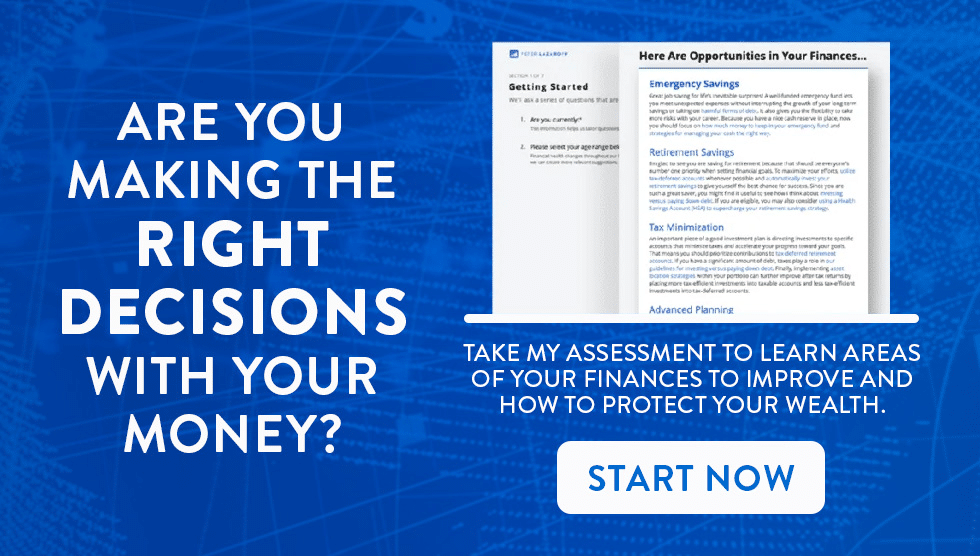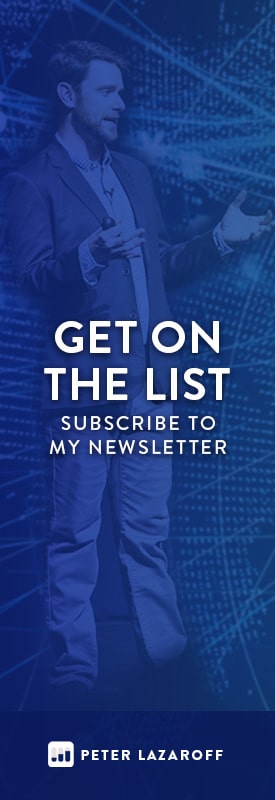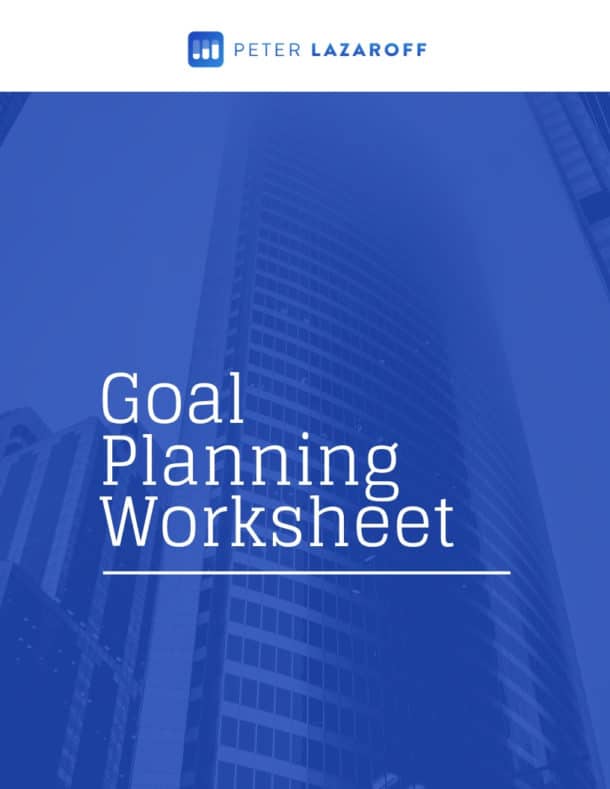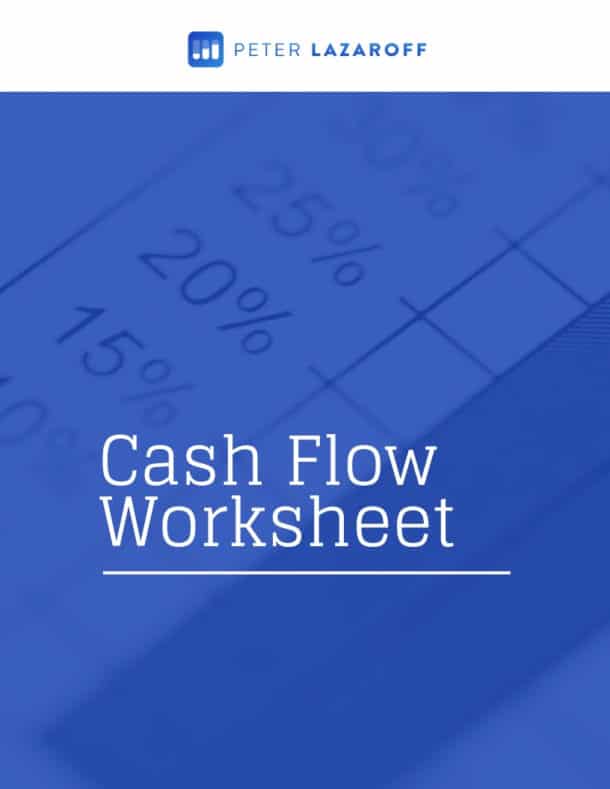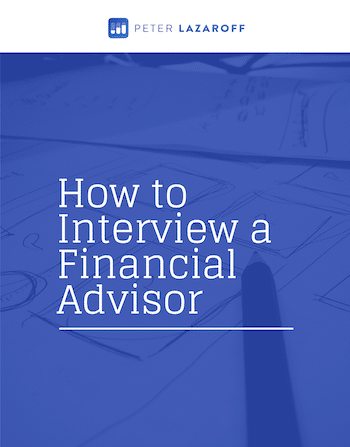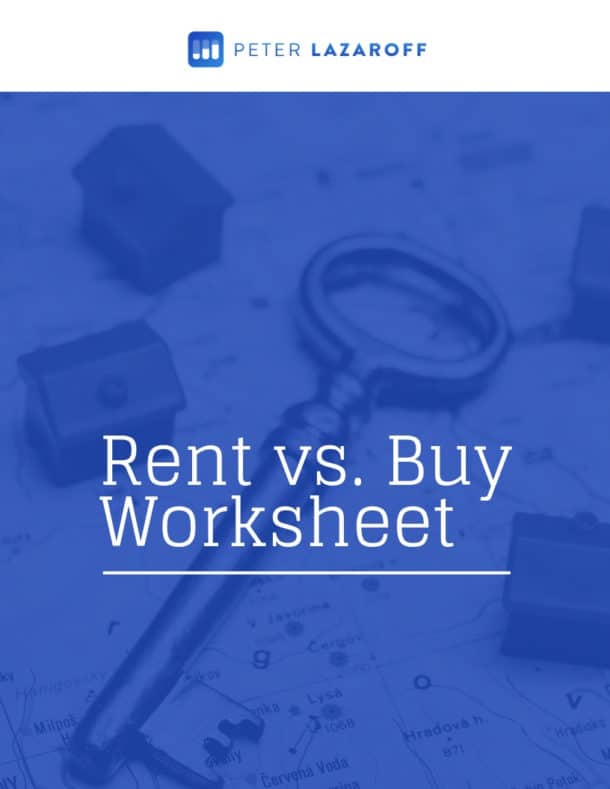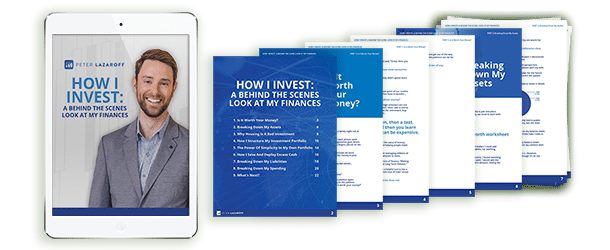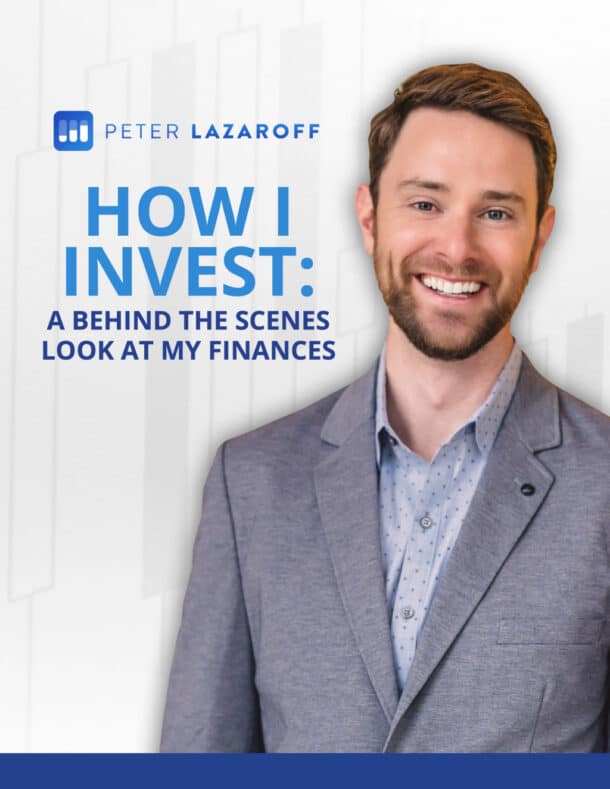As sustainable investing has gotten more popular, the industry and the media has largely erased the original meanings of the terms we used to rely on to help us differentiate between the different types.
Sam Adams, co-founder of Vert Asset Management and co-author of Your Essential Guide to Sustainable Investing, joins the show to explain everything you need to know.
Listen now and learn:
- The different types of sustainable investing
- 6 methods for being an ESG investor
- What returns to expect going forward
Watch Now
Listen Now
Show Notes
Sam Adams is CEO and co-founder of Vert Asset Management, a dedicated ESG investment management firm. He is the co-author of the book Your Essential Guide to Sustainable Investing.
When asked about how he was drawn to sustainable investing in the first place, Sam mentioned that being a climber and skier has allowed him to see the direct impact of climate change (there’s less snow than there used to be). He founded Vert Asset Management, which is a dedicated sustainable investment manager, after working at Dimensional Fund Advisors for almost 20 years. Sam’s passionate about how ESG investing is a way to turn capitalism and companies towards focusing on solutions to climate change.
Here are my notes from our conversation…
3 Types of Sustainable Investing (2:51)
As sustainable investing has gotten more popular, the industry and the media has largely erased the original meanings of the terms we used to rely on to help us differentiate between the different types.
Sam buckets them into three main categories: ESG (Environmental, Social, Governance), SRI (Socially Responsible Investing), and Impact Investing.
SRI Investing has been around for hundreds, and maybe thousands, of years. This form of investing is for someone that wants to maximize their total return, but there are areas they want to exclude whether that’s alcohol, tobacco, gambling, adult entertainment, etc. An SRI investor typically makes these exclusions because it’s against their morals, ethics, or religion.
Impact Investing is when you’re putting catalytic capital into a single project or company with the intent of solving a specific problem. It’s kind of like a for-profit version of philanthropy. Sam references the well-known saying: If you give a man a fish he eats for a day, if you teach a man to fish he eats for a lifetime. Impact investing is similar: give a man some capital, maybe he can buy a boat, hire some fishermen, and start a fishing business that feeds the village for a lifetime.
ESG is the latest variety of sustainable investing, and it’s only been around 15-20 years. It uses environmental issues, social impacts, and governance to identify risks and opportunities that companies face around people, planet, and profit.
Financial Expectations for Different Styles of Sustainable Investing (5:05)
Impact investing is mostly done through private placements, private equity, or private debt – so returns are all over the map. They literally range from -100% to 10x your investment.
If you are classifying yourself as an impact investor, the financial return isn’t quite as important to you. In some cases the investment becomes philanthropic when there is no return, or even a complete loss. And when there is a positive financial return, it’s common to see impact investors pile that back into more impact projects.
SRI and ESG investing can more easily be implemented in public markets, so their returns are typically much closer than what you’d expect from a conventional investment into public equities or bonds. But there are differences.
SRI investors typically exclude “sin stocks” that historically have done well over the last 80 to 100 years. So by systematically excluding those companies, you might get slightly lower returns. And traditionally, SRI strategies have been actively managed and come with higher expenses, so that can also act as a drag on returns.
ESG is different in that it’s more about what the company’s risks and opportunities are around environmental, social, and governance issues. And so there isn’t necessarily that drag on performance from systematically excluding things. Plus, there are now ESG index funds and low-cost strategies, so the expenses of an ESG fund are typically less of a drag on performance.
There is a quote from the book that really resonated with me on this topic as it pertains to ESG:
“Most modern ESG strategies are not based on what is individually important to the investor. Instead they are about what is important to the investments—companies are selected based on how they are dealing with the environmental, social, and governance issues most likely to affect them financially. It is more an investment-led strategy rather than the client-led strategies of SRI and impact investing. As a result, ESG strategies can be used by many people because they are not tailored to any individual in particular.”
Societal Returns for Different Styles of Sustainable Investing (11:08)
Yeah, they’re very different. And so it’s important to understand what they are, and then decide where you want to invest, and maybe across all three different types. Sam references an academic paper with a wonderful title called Can Sustainable Investing Save the World?
The paper breaks down the problem and the potential solutions and the way that sustainable investing has a societal return or an impact, how it changes corporate behaviors…They break it into three different categories.
The first is capital impacts: does the flow of the money change the ability of the company to do things or not do things? Are green firms getting allocated more capital such that it changes their cost of capital and do more projects?
Secondly, there’s active shareholder engagement. This is shareholder advocacy: does the investment manager use their power as a collective shareholder to encourage companies to do better through proxy voting, through shareholder activism, all different kinds of things.
The third way, which is really hard to measure, but might be one of the most important ways, is indirect effects, which they loosely group into things like benchmarking – Sam calls it “naming and shaming.” Sam gives a “naming” example from the 1990s when BMW and Volkswagen competed to be named the most sustainable car company. On the “shaming” side, Sam points to an organization like Greenpeace writing a report to shame all the data centers that are profligate users of energy and creating huge amounts of emissions – the hope being that the industry cleans up its act so that it doesn’t end up in that report.
So those three mechanisms – capital flows, shareholder advocacy, and indirect are naming and shaming – can have big impacts. For something like capital flows, being a SRI investor probably has very little impact because there’s not a lot of people with your particular set of specific issues. With ESG, though, it’s now a third of all professionally managed money around the world, so you would think companies are starting to respond.
For shareholder advocacy, it really varies from manager to manager, so that should be a focal point of selecting a fund if that mechanism is important to you.
Personal Returns to Investing Sustainably (14:40)
Being part of the solution as a reason to be a sustainable investor really resonates with me. And when it isn’t too difficult, many of us will choose the sustainable option.
For a long time, when sustainable investing was just SRI investing and you were probably going to underperform, that was too disruptive. But now with ESG investing strategies that can also match your asset allocation in a way that you’ve always done in the past makes it a lot easier for people to do it.
Sam gives the analogy of Coke cans that he needs to dispose of. If there’s a recycling bin right next to the trash can, he’s going to put it in the recycling bin. He isn’t sure how long he would be willing to carry around a Coke can if he can’t find a recycling bin – it’s unlikely to be a week – but when it’s easy, you know more people will do it. And that’s what’s happened with ESG investing.
It’s a lot easier to do and people want to be contributing. They want to do their part, even if they know they’re not saving whales or something….It’s kind of like putting the Coke can in the recycling bin in that at least you’re voting for the right thing when being an ESG investor.
Most Popular ESG Methods (17:53)
This is an area that I think causes a lot of confusion among advisors and end investors because there are so many ways to actually implement these types of strategies. Our conversation focuses on the different methods for being an ESG investor.
I’ve covered different methods of being an ESG in the past if you’re interested in checking those out:
- Podcast: ESG Investing (Episode 13)
- Blog: 6 Methods to Consider When Choosing an ESG Investment Strategy
Here’s how Sam describes the different methods:
Negative Screening
In an SRI strategy, negative screening means systematically excluding areas of the market the investor has a problem with, such as alcohol or tobacco.
An ESG negative screen might be something like excluding a company that is not adequately addressing the physical climate risks to their buildings, not paying attention to sea level rise, or to heat stress and drought…systematically screening those companies out.
Positive Screening
In an SRI strategy, positive screening comes in the form of strategies that are emphasizing certain beliefs, like a vegan strategy or a pro human rights strategy.
An ESG positive screen might tilt the portfolio towards companies coming up with renewable energy solutions or have a product that is ameliorating climate change. There are also positive screens that use rankings (“best in class”) to allocate towards companies in the top decile or quartile of a particular metric.
Integration
This is by far the largest category. It’s also something that Sam feels is a poorly defined category because many large institutional investors have recognized that some of these ESG issues are material risks to the portfolio, whether they’re sustainably minded or not.
I would think that if ESG integration is really just incorporating ESG data and information into financial analysis, I would hope any manager I’m allocating to would take into account anything that has material risks to it. I realize some of the ESG data isn’t always perfect, but Sam points out that the more people do ESG investing the better the data will get. It makes markets more transparent. It gets more information priced into capital markets.
The State of ESG Data (24:00)
ESG is not great, but it’s getting better all the time. That answer is the same today as it was in 2005. The answer is completely accurate, but it’s also completely devoid of any informational value.
In 2005, we had ESG data, but we really couldn’t make any distinctions between which company was doing better on sustainability or not. We had to rely on firms like MSCI or Sustainalytics to give us ratings – A, B, C, D, or some scale like zero to 100 on sustainability – and those ratings are exactly like an analyst saying this stock is up, I hold or sell. That was ESG 1.0. The ratings have the exact same informational value, which is close to zero.
ESG. 2.0 is where we are now, having moved past ratings to materiality. For example, if you look at a mining company, health and safety is critical for their workers. Now we have some statistics on accident rates, which is a material issue for the company and is also important from a social dimension. So that’s an ESG material issue that gets brought up and has datasets to help us parse differences between companies. Better investment managers have moved into the materiality era in the way that they manage money, rather than rely on ratings.
ESG 3.0 is where we are starting to head. Rather than just rely on companies reporting their own data in their own way, we would have standardized metrics just like we do on the financial side. It would be nice to trust a greenhouse gas emissions figure the way we can trust an earnings figure, but we’re not there yet. But the standardization is taking leaps and bounds.
Greenwashing (27:16)
When I inquire about “greenwashing,” Sam points out that companies have always been greenwashing, but he’s glad the industry is calling out companies that slap an ESG/integration label on their fund to capitalize on the growing popularity of ESG and capture more assets.
Sam reflects on when indexing got popular, we all found out that a bunch of active managers were closet indexing. They were taking advantage of the higher returns of indexing by tracking the market but they were charging high fees. That got called out too and now we have tools to measure how much fund managers deviate from the benchmark. It’s really the same thing.
For ESG, the tools are getting better and soon it will be clear to know who is greenwashing and who is really tilting strongly into sustainability.
Other Methods of ESG Investing (29:59)
I had started to get Sam’s take on different methods of ESG investing, but the data tangent was too relevant to ignore. But we get back to defining some of the other methods for being an ESG investor here:
Thematic
There are two categories of thematic ESG investments, which differ in how ideas are sourced for investments. These represent a much smaller portion of the ESG marketplace.
Norms-based strategies might come from something like the UN Global rules around anti-corruption, anti-bribery, human rights, labor issues – that’s a norms-based strategy. Similarly, a faith-based system (a very common one being one that follows the Catholic church recommendations) is a norms-based thematic investment.
Another thematic grouping is sustainability-themed in something like renewable energy, sustainable agriculture, or affordable housing.
Impact
We’ve already covered this in greater detail earlier in the episode. It’s obviously a very different approach than positive or negative screening, integration, thematic, etc.
Corporate Engagement
There are cool headline stories about how a couple of fund managers or one shareholder gets a company to stop using Styrofoam in their cups or stop doing palm oil deforestation – stuff like that is great, but Sam thinks the bigger story is systematic change.
When a whole group of investors is asking companies to do better on disclosures and set targets, that’s when systematic change starts happening. So what you should really want is your fund manager participating in that part.
Empirical Research on ESG (33:54)
There’s been a gold rush recently in the academic community on ESG performance studies, which is no surprise given the significant amount of money flowing in.
There’s evidence that says sustainable investing underperforms and evidence that says it outperforms. That’s probably mostly due to the fact that we haven’t completely parsed out the differences between SRI and ESG. But if you do that, you look at all the SRI studies going back 80 years, we can see that tobacco outperformed conventional products. As a result, SRI strategies tend to underperform. That’s been pretty well established.
More modern studies about ESG, which is really post 2016-2017, we don’t have enough data on. We don’t even have 10 or 15 years of data on ESG. So we really can’t make long term conclusions over what’s going to happen.
From an investor perspective, you do have choices now with strategies that are going to hug the market to various degrees, so you’re not going to get caught out one way or the other. We just don’t know enough to be able to say this is going to outperform by one or 2% like a value strategy versus underperform by one or 2% like a growth strategy. We don’t know the answers to those questions yet.
The prudent thing to do from Sam’s perspective is to build a strategy that’s going to track the index of a given asset class or market with a certain amount of difference every year based on the degree of tilting towards ESG. As Sam mentions, it’s not that different from owning the entire market and overweighting towards value or profitability, for example.
Another area we discussed is how fund flows impact past returns or future returns. Sam points out that there are two streams of research that counteract each other to some degree.
If you want a portfolio of stocks that are high performing on ESG, that means they have lower risk of pollution, fines or labor strife, or risk issues in their governance. They’re better run companies, so they’re going to attract more capital and their price will rise. That’s great, but then their expected returns should be lower over time.
In many ways, that’s kind of what you want: better, more sustainable firms are rewarded with more capital so they can fund more projects. That means you have a lower returning portfolio, but a safer portfolio. So maybe risk-adjusted returns are similar.
Where are we on that transition? Are we boosting the prices of green firms right now? Or are we already past that phase and they’re going to be low going forward? Are we in a new equilibrium or are we not there yet?
We just don’t know.
Europe has over 50% of all professionally managed money integrating ESG at some level, right? The US is about a third. When you ask individual investors, 70-80% of them would like some sustainability in their portfolio. If you look at the institutional community, seven of the 10 largest pension funds in the world integrate ESG already.
So you could say we’re still in the early innings and that repricing to the new equilibrium is still happening, and ESG firms will outperform. Or you could say we’re already past that point – it’s up for debate. And again – Sam comes back to the principles of portfolio construction – make sure that you build your portfolio to withstand either one of those outcomes.
Resources
- Vert Asset Management
- Your Essential Guide to Sustainable Investing
- Can Sustainable Investing Save the World?
- Podcast: ESG Investing (Episode 13)
- Blog: 6 Methods to Consider When Choosing an ESG Investment Strategy
Submit Your Question For the Podcast
Do you have a financial or investing question you want answered? Submit your question through the “Ask Me Anything” form at the bottom of my podcast page.
If you enjoy the show, you can subscribe wherever you listen to podcasts, and please leave me a review. I read every single one and appreciate you taking the time to let me know what you think.
About the Podcast

Long-term investing made simple. Most people enter the markets without understanding how to grow their wealth over the long term or clearly hit their financial goals. The Long Term Investor shows you how to proactively minimize taxes, hedge against rising inflation, and ride the waves of volatility with confidence.
Hosted by the advisor, Chief Investment Officer of Plancorp, and author of “Making Money Simple,” Peter Lazaroff shares practical advice on how to make smart investment decisions your future self with thank you for. A go-to source for top media outlets like CNBC, the Wall Street Journal, and CNN Money, Peter unpacks the clear, strategic, and calculated approach he uses to decisively manage over 5.5 billion in investments for clients at Plancorp.
Support the Show
Thank you for being a listener to The Long Term Investor Podcast. If you’d like to help spread the word and help other listeners find the show, please click here to leave a review.
Free Financial Assessment
Do you want to make smart decisions with your money? Discover your biggest opportunities in just a few questions with my Financial Wellness Assessment.
